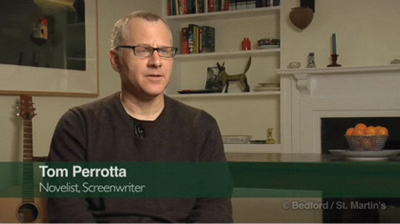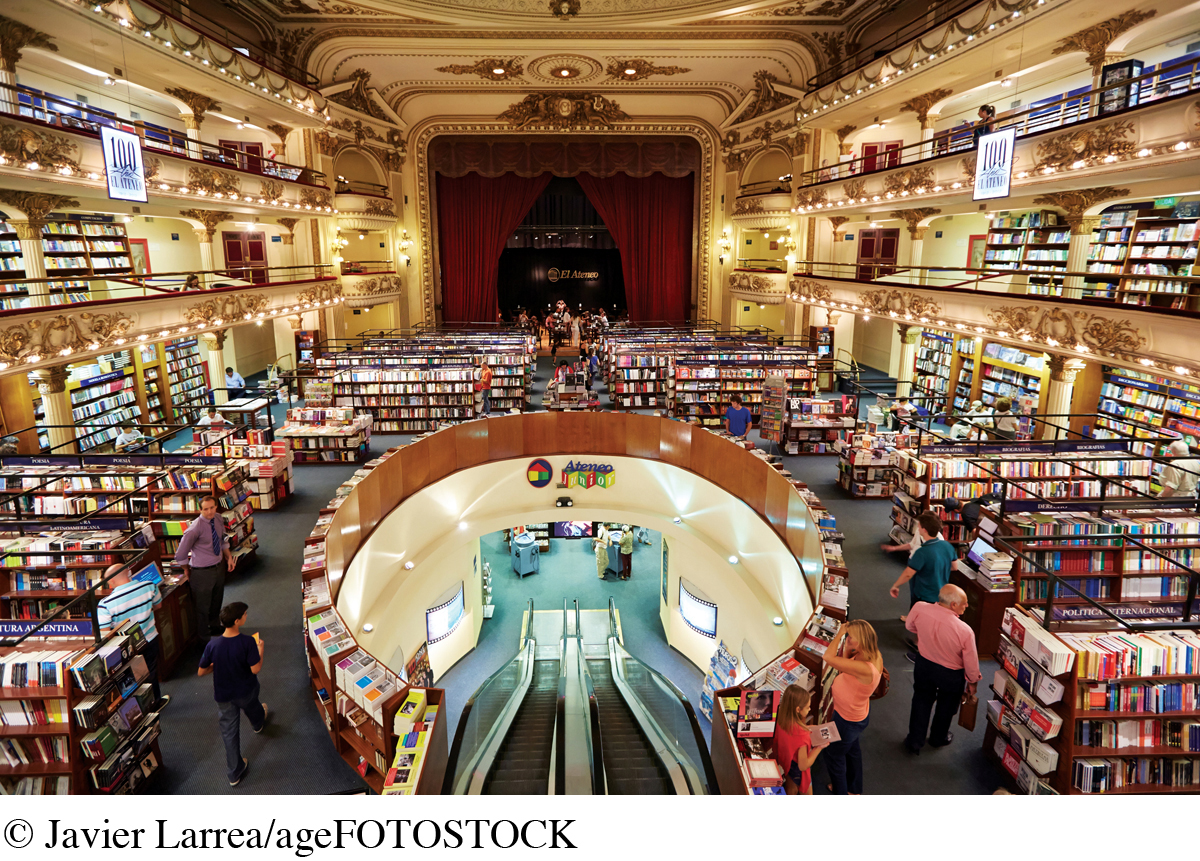Trends and Issues in Book Publishing
LaunchPad

Based On: Making Books into MoviesWriters and producers discuss the process that brings a book to the big screen.
Discussion: How is the creative process of writing a novel different from making a movie? Which would you rather do, and why?
Ever since Harriet Beecher Stowe’s abolitionist novel Uncle Tom’s Cabin sold fifteen thousand copies in fifteen days back in 1852 (and three million total copies prior to the Civil War), many American publishers have stalked the best-
356
Influences of Television and Film
There are two major facets in the relationship among books, television, and film: how TV can help sell books and how books serve as ideas for TV shows and movies. Through TV exposure, books by or about talk-
One of the most influential forces in promoting books on TV was Oprah Winfrey. Even before the development of Oprah’s Book Club in 1996, Oprah’s afternoon talk show had become a major power broker in selling books. In 1993, for example, Holocaust survivor and Nobel Prize recipient Elie Wiesel appeared on Oprah. Afterward, his 1960 memoir, Night, which had been issued as a Bantam paperback in 1982, returned to the best-

The film industry gets many of its story ideas from books (more than 1,450 feature-
357
Audio Books
Another major development in publishing has been the merger of sound recording with publishing. Audio books generally feature actors or authors reading entire works or abridged versions of popular fiction and nonfiction trade books. Indispensable to many sightless readers and older readers whose vision is diminished, audio books are also popular among readers who do a lot of commuter driving or who want to listen to a book at home while doing something else—
Convergence: Books in the Digital Age
In 1971, Michael Hart, a student computer operator at the University of Illinois, typed up the text of the U.S. Declaration of Independence, and thus the idea of the e-
Print Books Move Online
LaunchPad

Books in the New MillenniumAuthors, editors, and bookstore owners discuss the future of book publishing.
Discussion: Are you optimistic or pessimistic about the future of books in an age of computers and e-
Early portable reading devices from RCA and Sony in the 1990s were criticized for being too heavy, too expensive, or too difficult to read, while their e-
Amazon has continued to refine its e-
By 2013, e-
358
The Future of E-
E-
Preserving and Digitizing Books

Another recent trend in the book industry involves the preservation of older books, especially those from the nineteenth century printed on acid-
Another way to preserve books is through digital imaging. The most extensive digitization project, Google Books, which began in 2004, features partnerships with the New York Public Library and about twenty major university research libraries—
360
359
GLOBAL VILLAGE
Buenos Aires, the World’s Bookstore Capital
B uenos Aires, Argentina, has more bookstores per capita than any other city in the world. According to a 2015 study by the World Cities Cultural Forum, Buenos Aires has 734 bookstores, or about 25 per 100,000 people.1 By comparison, Madrid has 16 bookstores per 100,000 people, Tokyo has 13, London has 10, Paris and New York each have 9, Amsterdam and Berlin each have 7, Los Angeles and Rio de Janeiro each have 5, Mumbai has 4, and Singapore has 3.
Buenos Aires also has some of the best bookstores in the world, including El Ateneo Grand Splendid. A former theater palace built in 1919, the ornate building was repurposed as a bookstore in 2007. The main floor and balconies are filled with bookshelves, the former theater boxes are now reading nooks, and the stage, framed by a crimson curtain, is a café. The grand space is regularly cited as one of the most beautiful and most interesting bookstores in the world. Juan Pablo Marciani, manager of El Ateneo, says books are a significant part of Argentinian culture: “Books represent us like the tango. We have a culture very rooted in print.”2 So how did Buenos Aires come to have such a bookish culture?
Partly it’s due to chance; the country’s literary community grew and flourished with the influx of Spanish writers and publishers who fled to Argentina during the Spanish Civil War in the 1930s. It is also because of choice: Argentina doesn’t charge sales tax on books. Heavy taxes on e-
The main reason behind the country’s thriving bookstore culture, though, is that Argentina has fixed book pricing (FBP). Thirteen other countries have FBP as well: Austria, France, Germany, Greece, Italy, Japan, Lebanon, the Netherlands, Norway, Portugal, Slovenia, South Korea, and Spain. FBP rules among countries vary, but generally they require bookstores to limit price discounts during the first six months to two years following the release of a book. The rules usually apply to digital books as well. The effect is that all bookstores in a country sell the latest titles for roughly the same price, even digital books. Countries without FBP tend to have large book chains and Internet retailers, which can offer deep discounts on new releases and easily dominate the market.4 In the United States, Amazon used the Internet to change the distribution rules and undercut the brick-

The effect of FBP can be seen when comparing the number of independent bookstores in various countries. Since 1991, the United States has lost more than half of its independent bookstores, which represent less than 4 percent of the market. The United Kingdom, which gave up FBP in the late 1990s, has lost one-
Catherine Blache of the French Publishers Association explains that in France, “booksellers compete not on price, therefore, but in terms of the variety of books they offer, their location and the quality of their customer service.”6 This is what the Buenos Aires bookselling market looks like, too. Travel+ Leisure magazine recommends this special feature of life in Argentina’s capital. “Buenos Aires is bursting with bookstores. . . . Enjoy the land that Amazon forgot.”7
Media Literacy and the Critical Process
Banned Books and “Family Values”
In Free Speech for Me—
1 DESCRIPTION. Identify two contemporary books that have been challenged or banned in two separate communities. (Check the American Library Association Web site [www.ala.org/
2 ANALYSIS. What patterns emerge? What are the main arguments given for censoring the books? What are the main arguments of those defending these particular books? Are there any middle-
3 INTERPRETATION. Why did these issues arise? What do you think are the actual reasons why people would challenge or ban a book? (For example, can you tell if people seem genuinely concerned about protecting young readers or are just personally offended by particular books?) How do people handle book banning and issues raised by First Amendment protections of printed materials?
4 EVALUATION. Who do you think is right and wrong in these controversies? Why?
5 ENGAGEMENT. Read the two banned books. Then write a book review and publish it in a student or local paper, on a blog, or on Facebook. Through social media, link to the ALA’s list of banned books and challenge other people to read and review them.
Censorship and Banned Books
Over time, the wide circulation of books gave many ordinary people the same opportunities to learn that were once available to only a privileged few. However, as societies discovered the power associated with knowledge and the printed word, books were subjected to a variety of censors. Imposed by various rulers and groups intent on maintaining their authority, the censorship of books often prevented people from learning about the rituals and moral standards of other cultures. Political censors sought to banish “dangerous” books that promoted radical ideas or challenged conventional authority. In various parts of the world, some versions of the Bible, Karl Marx’s Das Kapital (1867), The Autobiography of Malcolm X (1965), and Salman Rushdie’s The Satanic Verses (1989) have all been banned at one time or another. In fact, one of the triumphs of the Internet is that it allows the digital passage of banned books into nations where printed versions have been outlawed. (For more on banned books, see “Media Literacy and the Critical Process: Banned Books and ‘Family Values’” on page 360.)
361
Each year, the American Library Association (ALA) compiles a list of the most challenged books in the United States. Unlike an enforced ban, a book challenge is a formal request to have a book removed from a public or school library’s collection. Common reasons for challenges include sexually explicit passages, offensive language, occult themes, violence, homosexual themes, promotion of a religious viewpoint, nudity, and racism. (The ALA defends the right of libraries to offer material with a wide range of views and does not support removing material on the basis of partisan or doctrinal disapproval.) Some of the most challenged books of the past decade include I Know Why the Caged Bird Sings by Maya Angelou, Forever by Judy Blume, the Harry Potter series by J. K. Rowling, and the Captain Underpants series by Dav Pilkey (see Figure 10.3).
